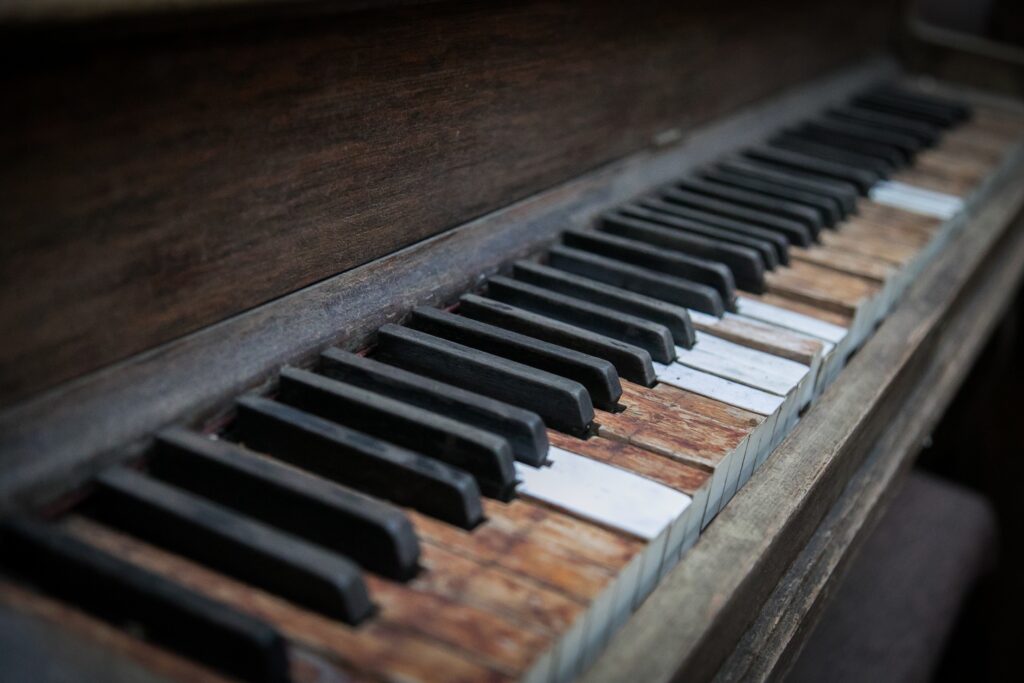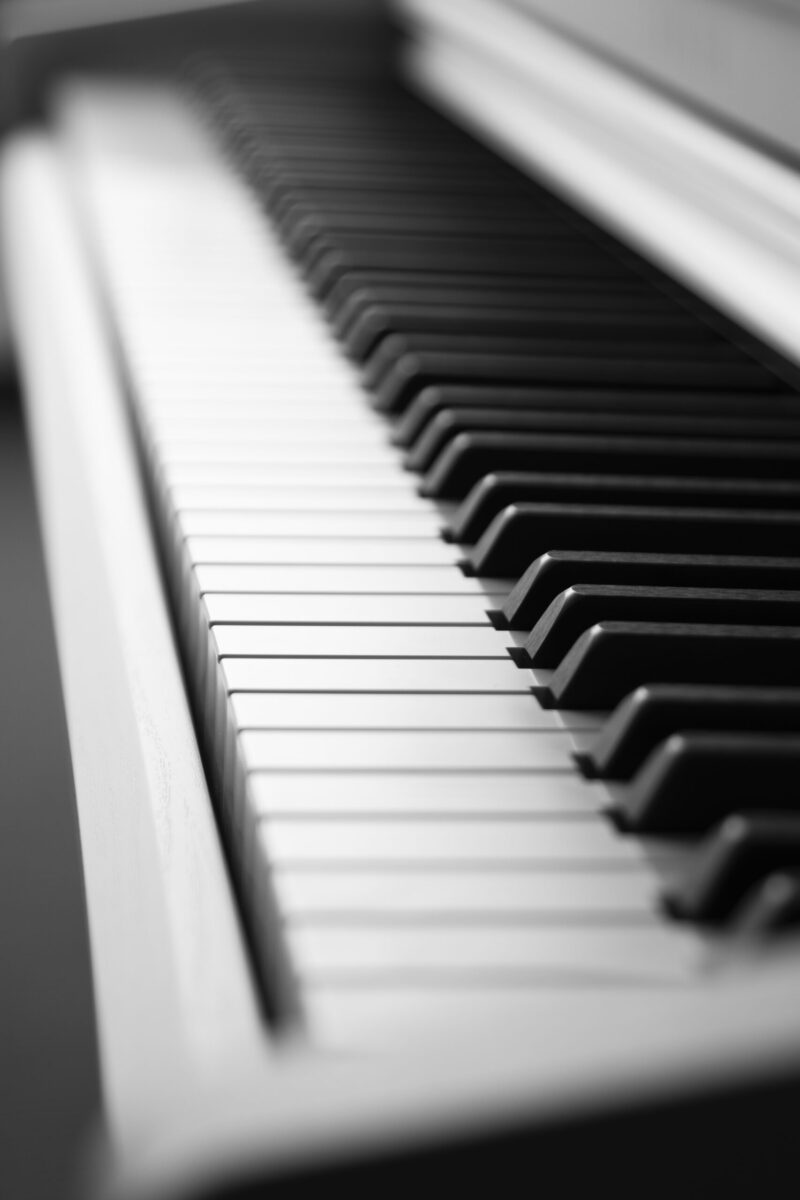Can Piano Keys Be Replaced? A Guide to Piano Maintenance
Within the world of piano ownership, a question lingers like a whisper in the air: can the keys of your cherished instrument be revived and restored? The timeless allure of the piano keys beckons us into a realm of exploration and revelation, where the promise of restoration and transformation awaits.
The journey of a piano key is one woven with tales of wear and tear, accidents, and the unforgiving embrace of extreme climates. These trials can leave a mark, manifesting as chips, cracks, or fractures that echo through the sound and playability of the piano. Yet within this symphony of challenges lies the possibility of renewal, a chance to breathe new life into the heart of the instrument.
As we embark on this odyssey of discovery, the process of replacing piano keys emerges as a complex and intricate dance, one that demands careful consideration and understanding. The keys themselves, each with its unique character and composition, hold the key to unlocking the secrets of restoration. Understanding the nuances of these keys and the delicate process of replacement becomes a beacon of knowledge, empowering piano owners to make informed decisions should the need for repair or replacement arise.
So, dear seeker of musical harmony and restoration, let us delve into the heart of this enigma, as we unravel the reasons behind the need for piano key replacement, explore the diverse types of piano keys, and uncover the intricate process of their restoration. Within these pages, the melody of renewal awaits, inviting you to discover the timeless art of piano key replacement and the promise of transformation that resonates within its hallowed embrace.
Overview of Piano Key Replacement
If you own a piano, you may eventually need to replace one or more keys. Piano keys can become damaged or worn over time, or they may break due to mishandling or accidents. Fortunately, replacing piano keys is a relatively straightforward process that can be done by a piano technician or even a skilled DIYer.
The first step in replacing a piano key is to identify the make and model of your piano. Piano keys come in a variety of shapes and sizes, and different manufacturers use different key designs. Once you know the make and model of your piano, you can order replacement keys from a piano parts supplier.
Replacing a piano key involves removing the old key and installing the new one. This process typically involves removing the key from the piano action, which is the mechanism that connects the key to the piano’s hammers and strings. The new key is then installed in the same position as the old one, and the action is reassembled.
It’s important to note that replacing piano keys can be a delicate process, and it’s not recommended for inexperienced individuals. If you’re not comfortable working on your piano yourself, it’s best to hire a professional piano technician to do the job for you.
Replacing piano keys is a frequent maintenance task essential for preserving the functionality of your piano. Armed with the appropriate tools and know-how, this task can be undertaken by a proficient DIYer or entrusted to a professional piano technician.
Types of Piano Keys

When it comes to piano keys, there are three main types: plastic, ivory, and wooden. Each type has its own unique characteristics and benefits.
Plastic Keys
Plastic keys are the most common type of piano key. They are made from a variety of materials, including acrylic, polystyrene, and PVC. Plastic keys are durable, lightweight, and easy to manufacture, which makes them a popular choice for modern pianos.
Ivory Keys
Ivory keys were once the standard for piano keys. They are made from the tusks of elephants and are highly valued for their beauty and unique feel. However, due to the ethical concerns surrounding ivory, it is now illegal to use it in the production of pianos. Instead, many modern pianos use synthetic ivory, which is designed to mimic the feel and texture of real ivory.
Wooden Keys
Wooden keys are the least common type of piano key. They are made from a variety of woods, including ebony, rosewood, and maple. Wooden keys are valued for their natural feel and warm tone, but they are also more expensive and difficult to manufacture than plastic or synthetic ivory keys.

The choice of piano key is contingent on personal preferences and the type of piano in your possession. Plastic keys, being the most prevalent and cost-effective, cater to many, while those seeking unique advantages may opt for the investment in ivory or wooden keys.
Determining the Need for Replacement
If you own a piano, you may be wondering if the keys can be replaced. The answer is yes, but it depends on the condition of the keys and the piano itself. Here are some things to consider when determining the need for replacement.
Wear and Tear
Over time, the keys on a piano can become worn down or damaged. This can happen from regular use, exposure to moisture or heat, or other factors. If the keys show signs of wear and tear, such as chips, cracks, or discolouration, they may need to be replaced.
Broken or Missing Keys
If a key is broken or missing, it will need to be replaced. This can happen from accidental damage or from regular use over time. If a key is missing, it can affect the sound of the piano and make it difficult to play certain notes. If a key is broken, it may not function properly and can also affect the sound of the piano.
Cosmetic Considerations
In some cases, you may want to replace the keys for cosmetic reasons. If the keys are discoloured or damaged, it can affect the overall appearance of the piano. Replacing the keys can give the piano a fresh, new look and make it more visually appealing.
In conclusion, determining the need for the replacement of piano keys depends on several factors. If the keys are showing signs of wear and tear, are broken or missing, or if you want to improve the piano’s appearance, replacing the keys may be necessary. It’s important to consider the condition of the piano as a whole when making this decision, as it can affect the sound and functionality of the instrument.
The Replacement Process
Replacing piano keys can be a daunting task, but with the right tools and a bit of patience, it is possible to do it yourself. In this section, we’ll go over the three main steps involved in the replacement process: removing old keys, selecting replacement keys, and installing new keys.
Removing Old Keys
Before you can install new keys, you need to remove the old ones. Start by opening the piano lid and locating the key you want to replace. Then, use a screwdriver to remove the screws that hold the key in place. Be sure to keep track of the screws so you don’t lose them.
Next, gently lift the key out of the piano. If the key is stuck, you may need to use a bit of force, but be careful not to damage any other parts of the piano. Once the key is removed, set it aside and repeat the process for any other keys you need to replace.
Selecting Replacement Keys
When selecting replacement keys, it’s important to choose ones that are the same size and shape as the original keys. You can find replacement keys online or at a piano supply store. Some stores may even offer custom-made keys that match your piano exactly.
Before purchasing replacement keys, make sure to measure the length, width, and thickness of the old keys. This will ensure that the new keys fit properly and don’t cause any damage to the piano.
Installing New Keys
Once you have your replacement keys, it’s time to install them. Start by placing the key into the slot where the old key was removed. Then, use the screws you removed earlier to secure the key in place. Be sure to tighten the screws enough so the key doesn’t wobble, but not so tight that you damage the key or the piano.
Repeat this process for any other keys you need to replace. Once all the new keys are installed, test them out by playing a few notes. If everything sounds good, you’re done!
In conclusion, replacing piano keys is a process that requires some skill and patience, but it is definitely doable. By following these steps and taking your time, you can replace your piano keys and get back to playing beautiful music.
Cost Factors

Replacing piano keys is a task that requires a certain amount of skill and expertise. As such, it is not a cheap process. There are several factors that contribute to the overall cost of replacing piano keys. In this section, we will discuss the material costs, labour costs, and additional repair costs that you can expect to encounter when replacing piano keys.
Material Costs
The material costs associated with replacing piano keys can vary depending on the type of piano and the materials used. Generally, piano keys are made of either plastic or ivory. If your piano has ivory keys, you can expect the cost of replacement to be higher due to the rarity of the material.
Labor Costs
The labour costs associated with replacing piano keys can also vary depending on the complexity of the job. If the replacement requires a significant amount of work, you can expect the labour costs to be higher. Additionally, if you choose to hire a professional piano technician, you will likely pay more for their expertise.
Additional Repair Costs
In some cases, replacing piano keys may reveal additional issues with the piano that need to be addressed. For example, if the piano keys were damaged due to a fall or impact, there may be damage to the internal components of the piano that also need repair. These additional repair costs can add up quickly, so it is important to be aware of them before beginning the replacement process.
Overall, the cost of replacing piano keys can be significant. However, if done correctly, the replacement can significantly improve the playability and overall sound of the piano. It is important to weigh the costs against the benefits to determine if replacement is the right choice for you.
DIY Versus Professional Replacement

If you’re considering replacing piano keys, you may be wondering whether to tackle the job yourself or hire a professional technician. Here are some things to consider:
DIY Considerations
Replacing piano keys is a delicate process that requires careful attention to detail. You’ll need to remove the old key, install the new one, and adjust the action to ensure proper alignment and response. If you’re handy with tools and have experience working with pianos, you may be able to handle the job yourself. However, if you’re not confident in your abilities, it’s best to leave the job to a professional.
One advantage of DIY replacement is that it can save you money. You won’t have to pay for labor costs, and you may be able to find replacement keys at a lower cost than a technician would charge. However, keep in mind that if you make a mistake during the replacement process, it could end up costing you more in the long run.
Finding a Professional Technician
If you decide to hire a professional technician to replace your piano keys, it’s important to find someone with experience and expertise in piano repair. Look for a technician who is a member of a professional organization, such as the Piano Technicians Guild, and who has a good reputation in the community.
When you contact a technician, ask about their experience with key replacement and their pricing. Be sure to get a written estimate before agreeing to any work. A professional technician will have the tools and expertise to ensure that your piano keys are replaced properly and that your instrument is in good working order.
In summary, if you have experience working with pianos and feel confident in your abilities, DIY key replacement may be an option. However, if you’re not comfortable with the process or want to ensure the best possible outcome, it’s best to hire a professional technician.
Maintenance After Replacement

Once you have replaced your piano keys, it is important to maintain them properly to ensure their longevity. Here are some tips on how to maintain your piano keys after replacement.
Regular Cleaning
It is important to clean your piano keys regularly to prevent dirt and grime buildup. You can use a soft cloth or a microfiber cloth to gently wipe the keys. Avoid using harsh chemicals or abrasive materials, as they can damage the keys. If you need to use a cleaning solution, make sure it is specifically designed for piano keys.
Proper Usage
Proper usage is also important in maintaining your piano keys. Avoid pressing the keys too hard or too fast, as this can cause damage to the keys. It is also important to avoid playing with dirty or greasy fingers, as this can leave residue on the keys. Additionally, make sure to keep the piano lid closed when not in use to prevent dust from settling on the keys.
Environmental Factors
Environmental factors can also affect the maintenance of your piano keys. Keep your piano away from direct sunlight and extreme temperatures, as this can cause the keys to warp or fade. Humidity can also affect the keys, so make sure to keep your piano in a room with moderate humidity levels. You can also use a dehumidifier or humidifier to control the humidity levels in the room.
By following these maintenance tips, you can ensure that your piano keys remain in good condition for years to come.
Frequently Asked Questions
What is the typical cost range for replacing piano keys?
The cost of replacing piano keys can vary depending on the type of piano and the extent of the damage. On average, you can expect to pay anywhere from $200 to $500 for replacing a set of piano keys. However, the cost can be higher if you have a grand piano or if the damage is extensive.
Are Yamaha piano keys replaceable and is the process different from other brands?
Yes, Yamaha piano keys are replaceable, and the process is similar to other brands. The main difference may be in the size and shape of the keys, which can affect the cost and availability of replacement parts. It’s always best to consult with a professional piano repair service to determine the best course of action for your specific piano.
How do I find a reputable piano repair service for key replacement in my area?
To find a reputable piano repair service in your area, you can start by asking for recommendations from friends, family, or music teachers. You can also search online for local piano repair services and read reviews from previous customers. When selecting a repair service, be sure to ask about their experience with piano key replacement and their pricing and warranty policies.
What are the steps involved in replacing the tops of piano keys?
Replacing the tops of piano keys involves several steps, including removing the old key tops, sanding and shaping the new key tops to fit, and securing the new key tops with adhesive. The process can be complex and requires specialized tools and expertise. It’s best to leave this type of repair to a professional piano repair service.
Is it possible to fully restore old or damaged piano keys to their original condition?
In some cases, it may be possible to fully restore old or damaged piano keys to their original condition. This can involve repairing or replacing damaged parts, refinishing the keys, and adjusting the action to ensure proper playability. However, the extent of the restoration will depend on the age and condition of the piano and the availability of replacement parts.
What type of adhesive is recommended for securing new piano keytops?
The type of adhesive recommended for securing new piano keytops can vary depending on the type of keys and the materials used. Common adhesives used for piano key replacement include cyanoacrylate (superglue), epoxy, and contact cement. It’s important to use a high-quality adhesive that is specifically designed for piano key replacement to ensure a strong and durable bond.






